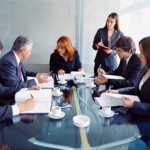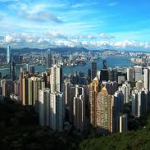Service objectives
The following list represents the Key Service Objectives (KSO) for the Appleton Greene Transitional Growth service.

Change Management
In order to grow we must change, change in a moment of big ferment, like in this particular historical and economical time is a must. For many years a Darwin thought has been a big part of my philosophy of life and business: it is not the strongest species to survive, but the one that is the most adaptable. Too rigid structures, sales model unfit for new markets, slow response, excessive procurement and distribution costs that do not permit to survive in a complex, ever changing and constantly in transition context. A structural, distributing or organizational change has to bring the Company to a more flexible and elastic in front of the demands of the market that are always different and modified by the quickest impulses of this liquid society. For this reason I take the Company by the hand through a revision that can have a perimeter as large as the need of this change. An offer that does not match the markets fuels a challenge made of innovation, inventions and rejuvenation. The excessive slowness in responding will determine the need of questioning and restructure the whole chain of procurement, production and distribution. It will touch eventually also marketing and sales, will face global themes and will give substantial answers based on innovation, the replicas of winning models and the adoption of new instruments. The need to cover always bigger areas without going bankrupt because of unbearable costs will determine other changes: distribution model, local partnership, roles empowerment and people‘s growth in the fields. These are only examples of possible changes, born out of the spur towards modern formulas, evolve the Company vision and live thanks to the realization of structured strategic plans well defined in time; they involve people, recognizing them a determinant role for the success of the plan, conquer step by step relevant target, spread motivation and enthusiasm. Change to grow means to add up, never to take away. There are six sequential passages with which I take Companies out of their dysfunctional comfort zone towards a new zone of profitable and safe action: Change definition, Scenario planning, Organizational structure, Employee involvement, Change deployment & review.

Business Development
To grow in constantly changing and complex environments cannot just be considered pure destiny. The factors to keep in mind are various and difficult to understand and separate. Only an international experience and an operational exposure in multinational Companies allows you to have a strategy that can became a winning tactics in the field. Starting from a matrix analysis of the present situation, I develop a tight cooperation with the Company aiming at to analyse all the possible scenarios. The strategic approach varies according to whether we need to develop a business in a geographic area where we are already present or we have to start afresh. If already present, the analysis weigh the penetration level, the quality of the territory coverage, the type of present model and correlated aspects whether successful or not. If we have to face the development of unknown geographies, the market will be the first source of information, then the analysis of competition and demand, the definition of Value proposition and the drafting of the business plan. The type of channel to use (direct or indirect) will be one of the difficult questions to be answered, pros and cons for each one, depending on each case; we need to take into consideration also a third channel, the Key Account one. One of the fundamental discriminant factor to take into consideration is to see whether we refer to new products and / or existing ones.

Mergers & Acquisition
Sometimes growth goes through strategic mergers and / or acquisitions that can send the Company shares to the moon or directly to hell. So to handle with care, we have learned to be extremely conscious with these kinds of operations because giants like HP and Compaq can make a major mistake and create a disaster. The creation of an Acquisition/Merge Team is one of the most delicate choices and is at the beginning of the whole process. It is a group of people chosen on the bases of how much they are able to support me by giving me precious internal information that I need to lead the Due Diligence Team. At first I need representative of every function so that together we will be able to analyse the general picture and the details that follow. Then having made all the due considerations on the bases of the Due Diligence, we will write a programme regarding either the merger or the acquisition process and we start the first internal communication campaign, aiming at realigning and programs. The first actions will have as a focus the internal climate of the Company, in particular the acquired company where the change process must be supported by actions, the objective of which is to consolidate the cooperation between the companies, pick up the contact points and facilitate the creation of a network that will function also from an interpersonal relations point of view. Supported by a favourite climate, the program towards the outside and the markets can start, following a roll out based on the capacity of a precise internal reply, the accessibility of resources and the return on the investment. In any operation of merger and acquisition my objective has been that of generating positive environments where the subject “us” is pivoting in the creation of a new reality.

Re-engineering
Many are the reasons for which a Company may have the need of start a process of re-engineering, whether it comes from a request liked to the financial or fiscal asset or whether it is a case of merger and acquisition, or there is an ongoing process of structural change or the starting of new procedures. In any of these cases the approach that we have to follow is strongly objective, extremely practical and destined to re-start to inject vital energies in the Company. Very often the complexity of contex and the uncertainty of the scenarios impose to the Company structure to transform and to adapt. The perimeter of impact of a re-engineering process varies accordingly to the need that we have to satisfy: it could touch only a part or extend to the whole. Firstly I decide to coordinate a detailed analysis of any department and/or function, inter-functionality, efficient barriers and points of discontinuity, pointing out repeated processes, expandable roles and reduce able ones. The answers we obtain from this analysis must be harmonized, verified critically in a way that enables us to see the bud of the rebirth, in the respect of the potentiality of the resources, giving importance to the centers of excellence and the talents of the individuals. The conclusions that we draw must have an absolute pertinence with the values and mission of the Company, nevertheless ensuring the reaching of the separate targets of growth. The re-engineering proposition will be analysed in partnership with the Management and the Trade Unions or the BOD. The planning of the roll out and the training will be carried out with the support of the HR Department, and joints will be constantly monitored and revised till a complete re-start towards a maximum production capacity.
Start-ups
The start-up of a new business cannot be left to Fate, we cannot hope that having a good product or a great motivation success will be assured. The new companies have to face every decision being aware of the real opportunities and the present risks. In fact any start up represents a certain margin of risk, thus it is wise to evaluate attentively the dander factors and the real success probabilities. The risk analysis and the relation between cost and benefits, require serious technical and operative instruments. Planning and programming are the first two indispensable factors, while the tool is that of the Business Plan. A business Plan embeds a fundamental role in the life of the Company. This document summarizes, describes and justifies the strategies set up for the growth of the Company and defines its modality of realization. The document of economic programming aims at: informing in a transparent and clear way, orientating the Management choices, foreseeing the future development of the entrepreneurial project, evaluating carefully the risk factors. A Company is successful only if its founders have studied carefully the market, evaluated the competition, conducted a detailed analysis and planned with care the different phases of the launch and put in place of the project, calculating the necessary resources and possible profits. A Business Plan must also emphasize Key Resources and Value Propositions, indispensable for information and for the project well-being. It is fundamental to recognize the key resources so that we can protect them, evaluate them well and reduce the risk of losing them. To clarify the Value Proposition is also important to face the market at any time. Together with this, the magical ingredients for a successful star up are the presence of a strong leadership recognized by the team, a concentration of competences in that particular sector, high elasticity e lateral thinking, and last but not least, the ability of solving problems, mediate conflicts and renegotiate objectives.
Automotive
The industry is more than 100 years old. It started in Germany and France, and came of age in the U.S. in the era of mass production. Vehicle volumes, efficiency, safety, features and choice have grown steadily throughout the industry’s history. It is so synonymous with 20th century industrial development, and so intertwined with its twin marvels, mass production and mass consumption, that it has been called the “industry of industries.” The automotive industry is a major industrial and economic force worldwide. It makes 60 million cars and trucks a year, and they are responsible for almost half the world’s consumption of oil. The industry employs 4 million people directly, and many more indirectly. Despite the fact that many large companies have problems with overcapacity and low profitability, the automotive industry retains very strong influence and importance. The industry also provides well-paying jobs with good benefits, has heavy linkages with supplier industries (which gives it an oversized role in economic development), and has a strong political influence.
All is not well in the automotive world. Worldwide, average margins have fallen from 20% in the 1920s to 5% now, with many companies losing money. This poor profitability performance is reflected in the industry’s market capitalization: despite its huge revenues and employment, the automotive industry accounts for only 1.6% of the stock market in Europe, and 0.6% in the U.S. There is a big contrast between the industry’s lackluster financial success and its oversized social role, share of employment and political influence. The overall performance of the industry can be traced to overcapacity and mature markets in developed countries. In the U.S., Europe and Japan, which account for 80% of world sales, growth has been stalling for many years. The natural response to slowing growth and increasing productivity is to reduce capacity. However, existing plants are very painful to scrap: mass production confers a strong cost advantage, which has traditionally encouraged very large and expensive plants. The result is excess capacity worldwide. Even continuing consolidation in the industry is not resulting in capacity reduction.

Telecommunication
The world economy has experienced an enormous growth in telecommunication sector during the past 50 years. Yet the gap between the richest and the poorest countries has increased. There have been several attempts to explain the increased differences. Proponents of the endogenous growth theory claim that a technological revolution has created a new growth paradigm. Following the information technology revolution seen in the industrialised world in the 90s, information and communication technology has often been launched as a possible remedy for the slow or decelerating growth developing countries have faced. We need to explore the relationship between telecommunications development and economic growth by performing an econometrical analysis. By estimating a simultaneous equation model where telecommunication infrastructure investments are indigenised into the aggregated economy and country specific fixed effects are included, simultaneous causality and spurious correlation are recognised.
Analysis indicate that there is a significant correlation between telecommunication and GDP growth. Overall, there seems to be larger growth effects from telecommunication development in developing countries than in developed countries, a result that contradicts earlier findings and the notion of network externalities. The report suggests that the indirect effects, i.e. the gain in productivity that other sectors experience as a result of development in the telecommunication sector, are more significant in developing countries, and this might explain the large growth effects found in these countries. The demand, supply and production equations in the simultaneous equation estimation have the same tendencies throughout the analysis, with only small variations. That is comforting. I also ran the system for the early nineties and late nineties separately, and the trends were the same independent of time. Even though there are differences between the single and simultaneous equation estimations, the tendencies are the same: There are some growth effects from telecommunications, and these effects are highest in developing countries.

Manufacturing
Manufacturing remains a critical force in both advanced and developing economies. But the sector has changed, bringing new opportunities and challenges to business leaders and policy makers. The global manufacturing sector has undergone a tumultuous decade: large developing economies leaped into the first tier of manufacturing nations, a severe recession choked off demand, and manufacturing employment fell at an accelerated rate in advanced economies. Still, manufacturing remains critically important to both the developing and the advanced world. In the former, it continues to provide a pathway from subsistence agriculture to rising incomes and living standards. In the latter, it remains a vital source of innovation and competitiveness, making outsized contributions to research and development, exports, and productivity growth. But the manufacturing sector has changed—bringing both opportunities and challenges—and neither business leaders nor policy makers can rely on old responses in the new manufacturing environment. Manufacturing’s role is changing. The way it contributes to the economy shifts as nations mature: in today’s advanced economies, manufacturing promotes innovation, productivity, and trade more than growth and employment. In these countries, manufacturing also has begun to consume more services and to rely more heavily on them to operate. Globally, manufacturing continues to grow. It now accounts for approximately 16 percent of global GDP and 14 percent of employment. But the manufacturing sector’s relative size in an economy varies with its stage of development. We find that when economies industrialize, manufacturing employment and output both rise rapidly, but once manufacturing’s share of GDP peaks—at 20 to 35 percent of GDP—it falls in an inverted U pattern, along with its share of employment. The reason is that as wages rise, consumers have more money to spend on services, and that sector’s growth accelerates, making it more important than manufacturing as a source of growth and employment. Manufacturing is not monolithic. It is a diverse sector with five distinct groups of industries, each with specific drivers of success. No two manufacturing industries are exactly alike; some are more labor- or more knowledge-intensive. Some rely heavily on transportation, while for others, proximity to customers is the critical issue. We have identified five broad manufacturing segments and analyzed how different production factors influence where they build factories, carry out R&D, and go to market.
The largest segment by output (gross value added) includes industries such as autos, chemicals, and pharmaceuticals. These industries depend heavily on global innovation for local markets—they are highly R&D intensive—and also require close proximity to markets. The second-largest segment is regional processing, which includes industries such as printing and food and beverages. The smallest segment, with just 7 percent of global manufacturing value-added, produces labor-intensive tradables. By 2025, a new global consuming class will have emerged, and the majority of consumption will take place in developing economies. This will create rich new market opportunities. Meanwhile, in established markets, demand is fragmenting as customers ask for greater variation and more types of after-sales service. A rich pipeline of innovations in materials and processes—from nanomaterials to 3-D printing to advanced robotics—also promises to create fresh demand and drive further productivity gains across manufacturing industries and geographies. These opportunities arise in an extremely challenging environment. In some low-cost labor markets, wage rates are rising rapidly. Volatile resource prices, a looming shortage of highly skilled talent, and heightened supply-chain and regulatory risks create an environment that is far more uncertain than it was before the Great Recession. A critical challenge for manufacturers will be to approach footprint decisions in a more nuanced way. Labor-intensive industries will almost always follow the path of low wages, but others, with more complex needs, must weigh factors such as access to low-cost transportation, to consumer insights, or to skilled employees. The result could very well be a new kind of global manufacturing company—a networked enterprise that uses “big data” and analytics to respond quickly and decisively to changing conditions and can also pursue long-term opportunities. Two key priorities for both governments and businesses are education and the development of skills. Companies have to build their R&D capabilities, as well as expertise in data analytics and product design. They will need qualified, computer-savvy factory workers and agile managers for complex global supply chains. In addition to supporting ongoing efforts to improve public education—particularly the teaching of math and analytical skills—policy makers must work with industry and educational institutions to ensure that skills learned in school fit the needs of employers.

Retail
Retail involves the process of selling consumer goods or services to customers through multiple channels of distribution to earn a profit. Demand is identified and then satisfied through a supply chain. Attempts are made to increase demand through advertising. In the 2000s, an increasing amount of retailing began occurring online using electronic payment and delivery via a courier or via postal mail. Retailing as a sector includes subordinated services, such as delivery. The term “retailer” is also applied where a service provider services the small orders of a large number of individuals, rather than large orders of a small number of wholesale, corporate or government clientele. Shops may be on residential streets, streets with few or no houses, or in a shopping mall. Shopping streets may restrict traffic to pedestrians only. Sometimes a shopping street has a partial or full roof to create a more comfortable shopping environment – protecting customers from various types of weather conditions such as extreme temperatures, winds or precipitation. Forms of non-shop retailing include online retailing (a type of electronic commerce used for business-to-consumer (B2C) transactions) and mail order. Shopping generally refers to the act of buying products. Sometimes this is done to obtain final goods, including necessities such as food and clothing; sometimes it takes place as a recreational activity. Recreational shopping often involves window shopping (just looking, not buying) and browsing: it does not always result in a purchase. The retailing strategy is a marketing plan abstractly designed to offer its products and services in a way that will optimize customer satisfaction. Service quality and marketing mix strategy have significant and positive association on customer loyalty. The marketing strategy effectively outlines all key aspects of firms targeted audience; demographic and preference. Throughout a highly competitive market, the retail strategy sets up long-term sustainability. It focuses on customer relationships, stressing the importance of added value and customer satisfaction. The retail mix is designed to complement the retail strategy through theoretical tools such as the product, its quality and value, the promotions, place, and price.
The design of a retail store is critical when appealing to its intended market, as this is where first impressions are made. It can influence a consumer’s perception of the quality of the store, visually communicating value. Certain techniques are used to create a consumer brand experience, which in the long run drives brand loyalty. The front of the store is paid close attention too, known as the “decompression zone” This is usually an open space in the entrance of the store to allow customers to adjust to their new environment. An open planned floor design is effective in retail as it allows customers to see everything. Depending on what side of the road cars drive on in the country, determines what way the store will direct its customers. New Zealand retailer stores for instances would direct customers to the left. Brands are now recognizing that human nature has a conceptual profile and a sensory profile. Through the notions of sensory stimulation retailers can engage maximum emotional impact between a brand and its consumers by relating to both profiles; the goal and experience. By achieving so it can influence purchasing behavior maximizing outcomes. This is done through the relation of touch, smell, sight, taste and noise. It is common for a retailer store to play music that relates to their targeted market. Jewellery stores like Michel Hill have dim lighting to creating a sense of intimacy. Super markets offer taste testers. Clothing garments are at arm’s reach, allowing customers to feel the different textures of clothing. Wooden floors also contrast with the carpeted fitting rooms, which is designed to create a sense of homeliness when trying on garments. ‘Peter Alexandra’ is renowned for their scented candles. These aspects outlined add to the sensory experience put in place to strategically achieve customer satisfaction and retention. This will create future opportunity and help a brand stand out in amongst the competitive market.

Consumer Goods
Fast-moving consumer goods (FMCG) or consumer packaged goods (CPG) are products that are sold quickly and at relatively low cost. Examples include non-durable goods such as soft drinks, toiletries, over-the-counter drugs, processed foods and many other consumables. In contrast, durable goods or major appliances such as kitchen appliances are generally replaced over a period of several years. FMCG have a short shelf life, either as a result of high consumer demand or because the product deteriorates rapidly. Some FMCGs, such as meat, fruits and vegetables, dairy products, and baked goods, are highly perishable. Other goods, such as alcohol, toiletries, pre-packaged foods, soft drinks, chocolate, candies, and cleaning products, have high turnover rates. The sales are sometimes influenced by some holidays and season. Though the profit margin made on FMCG products is relatively small (more so for retailers than the producers/suppliers), they are generally sold in large quantities; thus, the cumulative profit on such products can be substantial. FMCG is probably the most classic case of low margin and high volume business.
Bronze Service

Monthly cost: USD $1,500.00
Time limit: 5 hours per month
Contract period: 12 months
Bronze service includes:
01. Email support
02. Telephone support
03. Questions & answers
04. Professional advice
05. Communication management

SERVICE DESCRIPTION
The Bronze Client Service (BCS) for Transitional Growth provides clients with an entry level option and enables client contacts to become personally acquainted with Mr. Chinaglia over a sustainable period of time. We suggest that clients allocate up to a maximum of 5 Key Employees for this service. Your Key Employees can then contact the consultant via email, whenever they feel that they need specific advice or support in relation to the consultant’s specialist subject. The consultant will also be proactive about opening and maintaining communications with your Key Employees. Your Key Employees can list and number any questions that they would like to ask and they will then receive specific answers to each and every query that they may have. Your Key Employees can then retain these communications on file for future reference. General support inquiries will usually receive replies within 48 hours, but please allow a period of up to 10 business days during busy periods. The Bronze Client Service (BCS) enables your Key Employees to get to know their designated Appleton Greene consultant and to benefit from the consultant’s specialist skills, knowledge and experience.
Silver Service

Monthly cost: USD $3,000.00
Time limit: 10 hours per month
Contract period: 12 months
Bronze service plus
01. Research analysis
02. Management analysis
03. Performance analysis
04. Business process analysis
05. Training analysis

SERVICE DESCRIPTION
The Silver Client Service (SCS) for Transitional Growth provides more time for research and development. If you require Mr. Chinaglia to undertake research on your behalf, or on behalf of your Key Employees, then this would understandably require more time and the Silver Client Service (SCS) accommodates this. For example, you may want your consultant to undertake some research into your management, performance, business, or training processes, with a view towards providing an independent analysis and recommendations for improvement. If any research and development, or business analysis is required, then the Silver Client Service (SCS) is for you.
Gold Service

Monthly cost: USD $4,500.00
Time limit: 15 hours per month
Contract period: 12 months
Bronze/Silver service plus
01. Management interviews
02. Evaluation and assessment
03. Performance improvement
04. Business process improvement
05. Management training

SERVICE DESCRIPTION
The Gold Client Service (GCS) for Transitional Growth is intended for more detailed evaluation and assessment, that may require your Key Employees to have monthly meetings or interviews with Mr. Chinaglia. These meetings and interviews can be conducted over the telephone, Skype, or by video conference if required. The consultant can also attend your business premises, an Appleton Greene office, or another mutually beneficial location, but please note that clients are responsible for the costs of any disbursements separately, including travel and accommodation. This service enables you to integrate the specific skills, knowledge and experience of your designated consultant into your Key Employee management team. The Gold Client Service (GCS) can also incorporate training workshops, business presentations and external meetings with customers, suppliers, associations, or any other business-related stakeholders.
Platinum Service

Monthly cost: USD $6,000.00
Time limit: 20 hours per month
Contract period: 12 months
Bronze/Silver/Gold service plus
01. Project planning
02. Project development
03. Project implementation
04. Project management
05. Project review

SERVICE DESCRIPTION
The Platinum Client Service (PCS) for Transitional Growth is our flagship service and will be required if you need Mr. Chinaglia to facilitate the planning, development, implementation, management, or review of a particular project relating to his specialist subject, which would obviously require more time and dedication. This service enables you to reserve up to 12.5% of the consultant’s working month and provides a more hands-on service as and when required. If you need more time than this, then this can always be arranged, subject of course to the consultant’s ongoing availability. The benefit of having an external consultant involved in projects is they provide an independent perspective and are not influenced by internal politics, day-to-day responsibilities, or personal career interest. They provide objectivity, specific knowledge, skills and experience and will be entirely focused upon the tasks at hand. The Platinum Client Service (PCS) will provide your organization with a valuable resource as and when you need it.
Benefits
Globalization
- Complexity management
- Business development
- Stakeholder commitment
- Vision
- Increased innovation
- Transitional environment
- Strategy formulation
- Worldwide branding
- Mission execution
- Crisis response
Management
- Evaluation criteria
- Resource alignment
- Corporate effectiveness
- Higher retention
- Personal satisfaction
- Employee trust
- Confidence
- Decision making
- Change acceptance
- Communication skills
Marketing
- Sales models
- Business growth
- Business strategy
- Customer loyalty
- Enhanced performance
- Improved responsiveness
- Opportunity analysis
- Supplier evaluation
- Corporate goals
- Market Analysis
Clients
This service’s current clients or employers include:

IKEA
Inter IKEA Systems B.V. was established in 1983 in the Netherlands. It was founded to conceptualise the IKEA business model into what today has become the IKEA Concept. Inter IKEA Systems B.V is the owner of the IKEA Concept and the worldwide IKEA franchisor. Inter IKEA Systems B.V. is owned by Inter IKEA Systems Holding B.V. and is a company within the Franchise Division of Inter IKEA Group. The Franchise Division also includes service companies and companies selling IKEA products to franchisees on certain markets. Inter IKEA Systems B.V. works with a number of global partners that contribute to the IKEA Concept and support the IKEA franchisees. IKEA of Sweden AB is commissioned by Inter IKEA Systems B.V. to create the IKEA home furnishing offer by setting the IKEA product range. IKEA Food Services AB is commissioned by Inter IKEA Systems B.V. to set the IKEA Food & Beverage range. IKEA Supply AG has been granted the right to purchase and, together with Inter IKEA Distributors, sell the IKEA product range to IKEA retailers on certain markets. The parent company of the Inter IKEA Group is Inter IKEA Holding S.A. based in Luxembourg. The overall purpose of the Inter IKEA Group is to, through Inter IKEA Systems B.V., secure continuous improvement and a long life of the IKEA Concept. As this will require investments in both good and bad times the group strives to be financially independent. The Franchise Division with Inter IKEA Systems B.V. is the core of the Inter IKEA Group business. Inter IKEA Holding S.A. is fully owned by Interogo Foundation, based in Lichtenstein.

Olivetti
With one hundred years of research and innovation behind it, Olivetti has been the Telecom Italia Group’s information technology equipment specialist since August 2003. Headquartered in Ivrea, Olivetti offers products and services for SMBs, for the Retail sector and solutions for Large Accounts. Since August 2003, it has been part of the Telecom Italia Group. Olivetti is on the market as a global solutions provider, with a range of products and advanced services, acting as a partner able to develop customized solutions for processes automation and business activities. The industrial and technological heritage of Olivetti is included in a proposal made of: products & solutions and software & services. Olivetti is on the market following directly its Large Accounts and following indirectly the SMEs segment through the dealer channel; it is a vital asset for the company, there are about 400 dealers and resellers in Italy and more than 600 distributors in Europe and local partners in the rest of the world (mainly in South America, East Europe and the Middle East). The Olivetti organization provides full service coverage in Italy and Europe, through the Olivetti dealer network and through direct logistics and technical centers (more than 2,500 in Italy). Olivetti is also able to offer customer care services for direct customers and Telecom Italia through Advanced Caring, the department dedicated to the planning and delivery of services and solutions in specialized caring.

Telecom Italia Group
We develop new generation infrastructures with the goal of ensuring that 84% of Italians have coverage via the new fixed ultra-broadband network and 98% via the new mobile network by the end of 2018. By the end of 2015, the fixed network has already reached 42% of the population and the mobile network 88%. As we believe digital technologies are the basis for a smart, sustainable and inclusive growth. To simplify the daily life there are new solutions: electronic payment systems, smart homes, electronic medical records and certified electronic mail in the healthcare and government sectors, for the schools interactive multimedia whiteboards and web-based learning environments. For businesses, advanced platforms for cloud computing for the virtualization of applications and infrastructures, a vast selection of applications for storing and managing data or controlling energy consumption, products and software to enhance the use of digital signatures. For everyone, digital technology means to be always connected and access services and digital content – games, e-books, music and films, all constantly enriched with premium contents – with ease and safety: Of course all of this seamlessly on smartphones, tablets or other devices. Through the Telecom Italia Foundation we promote a vision of innovation and technology as social enablers, supporting projects in the fields of digital education and cultural innovation. As a result of the company’s social and environmental commitment, we have been included among the most important and selective stock market Sustainability indexes worldwide, for the last eleven years.

Vodafone
True to our origins, Vodafone has always committed to deliver useful and inspiring innovation. In 1991 we enabled the world’s first international mobile roaming call. In 2002, with Vodafone Live! we set a new standard for mobile communications with internet access on the move. Fueled by the desire for sustainable innovation, we recently introduced Vodafone Money Transfer which allows customers in emerging markets to send and receive money safely and easily using their mobile phone. We’ve also caused a stir in the industry with the Vodafone 150 – our most affordable ultra-low cost handset yet. We’re a brand that loves change – if it’s not happening naturally then we’re creating it ourselves. It’s in our DNA to push forward, to create a better future, to never rest and find new ways that help people communicate. That’s the lifeblood that runs throughout Vodafone. We are driven to empower people. To find that spark that empowers you is why we are in business. That’s what we mean when we say ‘power to you’.

Linde
Linde Material Handling ranks among the world’s foremost makers of forklift trucks and warehouse handling equipment. In addition, the company today offers its know-how, gained during decades of developing and manufacturing electric drive systems, to external customers for a wide variety of applications. As an international company, Linde Material Handling operates nine production and assembly plants in all important regions worldwide, and has a global sales and service network with offices in over 100 countries. The name of Linde Material Handling stands for quality. And this claim is also reflected in the design of our vehicles. Industrial trucks by Linde – whether diesel lift trucks, electric forklift trucks or warehouse handling equipment – stand out because of their innovative technology aimed at greater cost-effectiveness in logistics. Linde Material Handling offers expertise in material flow and carefully conceived functionality combined with maximum economy. Even if you decide for a used truck, a hire truck, for leasing or hire purchase, you will find the right balance between price and performance from the outset. Linde to host second “World of Material Handling” customer event in 2016 : Looking into the future of intralogistics.
Locations
This service is primarily available within the following locations:

Milan IT
Italy is the 4th-largest national economy in Europe, the 8th-largest by nominal GDP in the world, and the 12th-largest by GDP (PPP). The country is a founding member of the European Union, the Eurozone, the OECD, the G7 and the G8. Italy is the eighth largest exporter in the world with $514 billion exported in 2015. Its closest trade ties are with the other countries of the European Union, with whom it conducts about 59% of its total trade. The largest trading partners, in order of market share, are Germany (12.6%), France (11.1%), United States (6.8%), Switzerland (5.7%), United Kingdom (4.7%), and Spain (4.4%). In the post-war period, Italy was transformed from an agricultural based economy which had been severely affected by the consequences of the World Wars, into one of the world’s most industrialized nations, and a leading country in world trade and exports. According to the Human Development Index, the country enjoys a very high standard of living, and has the world’s 8th highest quality of life according to The Economist. Italy owns the world’s third-largest gold reserve, and is the third net contributor to the budget of the European Union. The country is also well known for its influential and innovative business economic sector, an industrious (Italy is the second largest manufacturer in Europe behind Germany) and competitive agricultural sector (Italy is the world’s largest wine producer), and for its creative and high-quality automobile, naval, industrial, appliance and fashion design. Italy is the largest market for luxury goods in Europe (third in the world). Milan is the financial centre of Italy. Despite these important achievements, the country’s economy today suffers from many and relevant problems. After a strong GDP growth in 1945–1990, the last two decades’ average annual growth rates lagged below the EU average; moreover, Italy was hit particularly hard by the late-2000s recession. The stagnation in economic growth, and the political efforts to revive it with massive government spending from the 1980s onwards, eventually produced a severe rise in public debt. In addition, Italian living standards have a considerable North–South divide: the average GDP per capita in Northern and Central Italy significantly exceeds the EU average, whilst some regions and provinces in Southern Italy are dramatically below. In the Index of Economic Freedom 2015, the country ranked only 80th in the world, in particular due to the slow legal system, an excessive taxation, and a strong labor law.

London UK
The United Kingdom has the fifth-largest national economy (and second-largest in EU) measured by nominal GDP and ninth-largest in the world (and second-largest in the EU) measured by purchasing power parity (PPP). The UK economy currently makes up 4% of world GDP. The UK has been the fastest growing economy in the G7 for four consecutive years with 2.1% year on year growth in Q1 2016. In 2014 the UK was the ninth-largest exporter in the world and the fifth-largest importer, and had the second largest stock of inward foreign direct investment and the second-largest stock of outward foreign direct investment. The UK is one of the world’s most globalised economies. The UK economy comprises (in descending order of size) the economies of England, Scotland, Wales and Northern Ireland. The service sector dominates the UK economy, contributing around 78% of GDP; the financial services industry is particularly important and London is the world’s largest financial centre. The British aerospace industry is the second- or third-largest national aerospace industry depending on the method of measurement. The pharmaceutical industry plays an important role in the economy and the UK has the third-highest share of global pharmaceutical R&D. The automotive industry is also a major employer and exporter. The British economy is boosted by North Sea oil and gas production; its reserves were valued at an estimated £120 billion in 2011.There are significant regional variations in prosperity, with the South East of England and southern Scotland the richest areas per capita. The size of London’s economy makes it the largest city by GDP in Europe. In the 18th century the UK was the first country to industrialise and during the 19th century it had a dominant role in the global economy. From the late 19th century the Second Industrial Revolution was also taking place rapidly in the United States and Germany, this presented an increasing economic challenge for the UK. The costs of fighting World War I and World War II further weakened the UK’s relative position. However, as of 2016 it remains a great power with global strengths and an influential role in the world economy. In 2008, the UK entered a recession during the financial crisis of 2007–08, its first for nearly two decades, and initially experienced a deeper downturn than all of the G7 except Japan. However, since 2013 the UK has been in a nascent economic recovery and is firmly in expansion territory. The UK economy is now (Q1 2016) 7.3% bigger than its pre-crisis peak and 14.2% bigger than its lowest point in 2009. Since 2010, the Government has been pursuing an austerity program aimed at cutting the budget deficit. In the financial year 2009–10 this was 12.1% of GDP, it was 3.9% in the financial year 2015–16. Government involvement in the British economy is primarily exercised by HM Treasury, headed by the Chancellor of the Exchequer, and the Department for Business, Innovation and Skills. Since 1979 management of the UK economy has followed a broadly laissez-faire approach. The Bank of England is the UK’s central bank and its Monetary Policy Committee is responsible for setting interest rates. The currency of the UK is the pound sterling, which is also the world’s third-largest reserve currency after the US dollar and the euro, and also the fourth-most-valued currency in the world, behind the Kuwaiti Dinar, Bahraini Dinar, and Omani Rial, and the most valued currency outside the Middle East. The UK is a member of the Commonwealth of Nations, the European Union, the G7, the G8, the G20, the International Monetary Fund, the Organisation for Economic Co-operation and Development, the World Bank, the World Trade Organisation, Asian Infrastructure Investment Bank and the United Nations.

Sao Paulo BR
Brazil has the world’s seventh largest economy by nominal GDP, and the seventh largest by purchasing power parity. The Brazilian economy is characterized by moderately free markets and an inward-oriented economy. Brazil’s economy is the largest of Latin America and the second largest in the Western Hemisphere. From 2000 to 2012, Brazil was one of the fastest-growing major economies in the world, with an average annual GDP growth rate of over 5%, with its economy in 2012 surpassing that of the United Kingdom, making Brazil the world’s sixth largest economy. However, Brazil’s economy growth has decelerated in 2013 and had almost no liquid growth throughout 2014, and the country’s economy is expected to shrink by 4% in 2015. According to the World Economic Forum, Brazil was the top country in upward evolution of competitiveness in 2009, gaining eight positions among other countries, overcoming Russia for the first time, and partially closing the competitiveness gap with India and China among the BRIC economies. Important steps taken since the 1990s toward fiscal sustainability, as well as measures taken to liberalize and open the economy, have significantly boosted the country’s competitiveness fundamentals, providing a better environment for private-sector development. In 2012 Forbes ranked Brazil as having the 5th largest number of billionaires in the world, a number much larger than what is found in other Latin American countries, and even ahead of United Kingdom and Japan. Brazil is a member of diverse economic organizations, such as Mercosur, Unasul, G8+5, G20, WTO, and the Cairns Group.

Moscow RU
Russia has a high-income mixed economy with state ownership in strategic areas of the economy. Market reforms in the 1990s privatized much of Russian industry and agriculture, with notable exceptions in the energy and defense-related sectors. Some sources estimate that Russia contains over 30 percent of the world’s natural resources. The World Bank estimates the total value of Russia’s natural resources at $75 trillion US dollars. Russia relies on energy revenues to drive most of its growth. Russia has an abundance of oil, natural gas and precious metals, which make up a major share of Russia’s exports. As of 2012 the oil-and-gas sector accounted for 16% of the GDP, 52% of federal budget revenues and over 70% of total exports. Russia has a large and sophisticated arms industry, capable of designing and manufacturing high-tech military equipment, including a fifth-generation fighter jet, nuclear powered submarines, firearms, short range/long range ballistic missiles. The value of Russian arms exports totalled $15.7 billion in 2013—second only to the US. Top military exports from Russia include combat aircraft, air defence systems, ships and submarines. In 2014, the Russian economy was the sixth largest in the world by PPP and tenth largest at market exchange rates. Between 2000 and 2012 Russia’s energy exports fueled a rapid growth in living standards, with real disposable income rising by 160%. In dollar-denominated terms this amounted to a more than sevenfold increase in disposable incomes since 2000. In the same period, unemployment and poverty more than halved and Russians’ self-assessed life satisfaction also rose significantly. This growth was a combined result of the 2000s commodities boom, high oil prices, as well as prudent economic and fiscal policies. However, these gains have been distributed unevenly, as the 110 wealthiest individuals were found in a report by Credit Suisse to own 35% of all financial assets held by Russian households. Poor governance means that Russia also has the second-largest volume of illicit money outflows, having lost over $880 billion between 2002 and 2011 in this way. Since 2008 Forbes has repeatedly named Moscow the “billionaire capital of the world”. The Russian economy risked going into recession from early 2014 – mainly as a result of the falling oil prices, the 2014 Russian military intervention in Ukraine and the subsequent capital flight. However, the 2014 GDP growth remained positive at 0.6%. In 2015, the Russian economy shrunk by 3.7% and is expected to shrink further in 2016. However, the World Bank and the IMF estimate that Russia’s economy will begin to recover by 2017. In January 2016, the US company Bloomberg rated Russia’s economy as the 12th most innovative in the world, up from 14th in January 2015 and 18th in January 2014. Russia has the world’s 15th highest patent application rate, the 8th highest concentration of high-tech public companies, such as internet and aerospace and the third highest graduation rate of scientists and engineers. Alexei Kudrin, the ex-finance minister said that Russia needs to reduce geopolitical tensions to improve the economic conditions.

Hong Kong CN
China’s socialist market economy is the world’s second largest economy by nominal GDP, and the world’s largest economy by purchasing power parity according to the IMF, although China’s National Bureau of Statistics rejects this claim. Until 2015 China was the world’s fastest-growing major economy, with growth rates averaging 10% over 30 years. Due to historical and political facts of China’s developing economy, China’s public sector accounts for a bigger share of the national economy than the burgeoning private sector. China is a global hub for manufacturing, and is the largest manufacturing economy in the world as well as the largest exporter of goods in the world. China is also the world’s fastest growing consumer market and second largest importer of goods in the world. China is a net importer of services products. China is the largest trading nation in the world and plays a vital role in international trade, and has increasingly engaged in trade organizations and treaties in recent years. China became a member of the World Trade Organization in 2001. China also has free trade agreements with several nations, including Australia, South Korea, ASEAN, New Zealand, Switzerland and Pakistan. On a per capita income basis, China ranked 72th by nominal GDP and 84th by GDP (PPP) in 2015, according to the International Monetary Fund (IMF). The provinces in the coastal regions of China tend to be more industrialized, while regions in the hinterland are less developed. As China’s economic importance has grown, so has attention to the structure and health of the economy. To avoid the long-term socioeconomic cost of environmental pollution in China, it has been suggested by Nicholas Stern and Fergus Green of the Grantham Research Institute on Climate Change and the Environment that the economy of China be shifted to more advanced industrial development with high-tech, low carbon emissions with better allocation of national resources to innovation and R&D for sustainable economic growth in order to reduce the impact of China’s heavy industry. This is in accord with the planning goals of the central government. Xi Jinping’s Chinese Dream is described as achieving the “Two 100s”: the material goal of China becoming a “moderately well-off society” by 2021, the 100th anniversary of the Chinese Communist Party, and the modernization goal of China becoming a fully developed nation by 2049, the 100th anniversary of the founding of the People’s Republic. The internationalization of the Chinese economy continues to affect the standardized economic forecast officially launched in China by the Purchasing Managers Index in 2005. At the start of the 2010s, China became the sole Asian nation to have a GDP (PPP) above the $10-trillion mark (along with the United States and the European Union). As China’s economy grows, so does China’s Renminbi, which undergoes the process needed for its internationalization. The economy of China has recently initiated Asian Infrastructure Investment Bank in 2015. China has been criticized by Western media for unfair trade practices, including artificial currency devaluation, intellectual property theft, protectionism, and local favoritism due to one-party oligopoly by the Communist Party of China with Socialism with Chinese characteristics. As of 2015 there was talk of a “slowing” Chinese economy, but that referred to a slowing of the rate of economic growth, not to a recession. The slowdown manifested in industrial regions as excess capacity in basic industries such as coal, steel, and cement, in the auto industry as reduced sales.
Achievements

Ikea SpA
Responsible for back office operational services. Monthly reporting, budgeting and controlling of IT, Logistics, Procurement, HR, Management Service Contracts, 3rd Party Consultants i.e. Insurance. HR management including recruitment, retention and dismissal, plus Trade Union negotiation. Cost Budget $US 100 m. Direct reports 15. In Ikea start-up of HQ and first 4 stores in Italy: implementation of the correct processes and overhead costs down from 19% to 8%.

Olivetti SpA
P&L responsibility for the Office Automation Business in the EMEA region (7 subsidiaries) including IDS and OEM’s (International Direct Sales & Original Equipment Maker). Co-ordination and management of all Marketing & Sales activities within the division. Division reorganization from loss making (losing €10m) to profitability. Improved business performance through sales expansion and cost cutting. Turnover €300 m, FTE’s 300, Direct reports 10. Within 12 months was promoted from General Manager for Direct International Sales to Vice President of Sales and EMEA Director. In Olivetti he restored business profitability in 2 years; merged different country markets; opened new subsidiaries in emerging markets and closing some in WE and implementation of a strict cost cutting program in the Division.

OM SpA
Board Chairman for the portfolio of subsidiaries representing the German, French, Spanish, English and Chinese companies. Divisional P&L responsibility, subsequently promoted to General Manager with P&L responsibility for all OM Brand. Turnover €400 m, FTE’s 1,300, Direct reports 9. OM turn over grew from 180 m to 390 m euros while EBITDA from -14m to + 7m euros: led and implemented Six Sigma to the manufacturing facilities in Italy and China; incorporated and established a China distribution system and a sales network; enhance presence and sales channels in MENA and East Europe and South America and restructured product portfolio to better match the needs of emerging market.

LHTD Ltd
As Managing Director, responsible to carry out a business turnaround for the heavy trucks division. Cost optimization of the China operations though integration. Cost optimization of UK R & D to exploit potential in the EU & USA market. Direct reporting to the Board of Directors of the Kion Group. Turnover €200 m, FTE’s 400, Direct reports 7. LHTD UK: increased revenues from 96 to 210 million pounds and shifted EBITDA margin from negative to positive in 3 years; increased productivity from 45% to 65%; inventory optimization with WIP at – 15% and fixed costs at 5%; integration of supply chain, production and design; implementation of four different kind of Forklift trucks and expansion of the Chinese factory and APAC business.

Salice Ltd
Established the Asian business model (legal and operational) to conduct business in Hong Kong, South East Asia, China and India focusing on the China market. Selection and screening of distribution agents. Implementation of performance targets. SAliceDirect reporting line to the owner and CEO of the business. Turnover $50, FTE’s 35, agents in 10 countries, 3 office3, own plant in China South with 100 employees. Direct reports 10. In Hong Kong start-up of an operational and commercial company: creation of the Asian sales force and opened a China-based manufacturing facility.
Personal Profile
Mr Chicles is an approved Certified Learning Provider (CLP) at Appleton Greene who is a business leader and strategist with broad experience in the global multi-industrial, aerospace and defense sectors. He is a seasoned operational leader of global industrial businesses, leading transformational strategies in highly competitive markets.
As a senior, C-suite strategist for multiple major industrial corporations he has led multiple mergers, acquisitions, divestitures and restructurings, as well as corporate break-ups and spin-offs. He has a distinguished track record of successful transformations of complex organizations in dynamic and uncertain market conditions while engendering the trust and buy-in of employees, customers, vendors, owners, corporate leadership and boards of directors.
A highly engaged leader at the personal and team level he has demonstrated the ability to engender effective senior teams and boards. He’s also an active mentor, teacher and community leader.
Mr Chicles is an active board member with AES Seals, global leader in sustainable reliability engineering, and Micro Technologies Inc, an electronics and advanced manufacturing company. He is a principal partner with ProOrbis Enterprises®, a management science consultancy with premier clients such as the US Navy and PwC, as well as the principal of Xiphos Associates™, a management and M&A advisory. Recently, he served as Board Director and Chairman of Global Business Development with Hydro Inc. the largest independent pump and flow systems engineering services provider in the world.
He was President of ITT’s Industrial Process / Goulds Pumps business segment a global manufacturer of industrial pumps, valves, monitoring and control systems, and aftermarket services for numerous industries with $1.2 billion in revenue, 3,500 employees and 34 facilities in 17 countries. Preceding this role he served as Executive Vice President of ITT Corporation overseeing the creation of a newly conceived ITT Inc. following the break-up of the former ITT Corporation to establish its strategy and corporate functions such as HR, communications, IT and M&A, building the capabilities, policies and organizations for each.
He joined ITT Corporation’s executive committee as its strategy chief in 2006 and instituted disciplined strategic planning processes and developed robust acquisition pipelines to respond to rapidly changing markets. Created successful spin-offs of 2 new public corporations Exelis Inc. and Xylem Inc. ITT Corporation was named one of “America’s Most Respected Corporations” by Forbes for exemplary management and performance during his tenure there.
Before joining ITT, Mr Chicles served as Vice President of Corporate Business Development and head of mergers and acquisitions for American Standard / Trane Companies, where he initiated and closed numerous transactions and equity restructurings globally.
Additionally, he created and led the corporate real estate function which entailed more than 275 real estate transactions around the world.
He began his career at Owens Corning rising through the ranks in various operational roles to Vice President of Corporate Development.
Recently, he taught advanced enterprise strategy at Stevens Institute of Technology as an adjunct professor and still supports start-ups through the Stevens Venture Center. He continues to be active as the Founding Board Member with several successful start-up technology businesses and non-profit organizations. A community leader, Mr Chicles has held the role of President of the Greek Orthodox Cathedral in Tenafly, N.J., He also led trips abroad to Cambodia and Costa Rica to build sustainable clean-water solutions and affordable housing.
His formal education includes earning a Masters of Business Administration from The Wharton School at the University of Pennsylvania, and a Bachelors in Finance from Miami University.
(CLP) Programs

Appleton Greene corporate training programs are all process-driven. They are used as vehicles to implement tangible business processes within clients’ organizations, together with training, support and facilitation during the use of these processes. Corporate training programs are therefore implemented over a sustainable period of time, that is to say, between 1 year (incorporating 12 monthly workshops), and 4 years (incorporating 48 monthly workshops). Your program information guide will specify how long each program takes to complete. Each monthly workshop takes 6 hours to implement and can be undertaken either on the client’s premises, an Appleton Greene serviced office, or online via the internet. This enables clients to implement each part of their business process, before moving onto the next stage of the program and enables employees to plan their study time around their current work commitments. The result is far greater program benefit, over a more sustainable period of time and a significantly improved return on investment.

Appleton Greene uses standard and bespoke corporate training programs as vessels to transfer business process improvement knowledge into the heart of our clients’ organizations. Each individual program focuses upon the implementation of a specific business process, which enables clients to easily quantify their return on investment. There are hundreds of established Appleton Greene corporate training products now available to clients within customer services, e-business, finance, globalization, human resources, information technology, legal, management, marketing and production. It does not matter whether a client’s employees are located within one office, or an unlimited number of international offices, we can still bring them together to learn and implement specific business processes collectively. Our approach to global localization enables us to provide clients with a truly international service with that all important personal touch. Appleton Greene corporate training programs can be provided virtually or locally and they are all unique in that they individually focus upon a specific business function. All (CLP) programs are implemented over a sustainable period of time, usually between 1-4 years, incorporating 12-48 monthly workshops and professional support is consistently provided during this time by qualified learning providers and where appropriate, by Accredited Consultants.
Additionally, while the M&A industry has many advisors available, they tend not to be operating executives who have lived through all the elements I will lay out below. Many simplistic guidelines exist, however what its clear is that the difference between success and failure with acquisitive growth is not in rote adherence to some set of processes, rather it is found in the combination of process discipline and strong application of experiential, practical knowhow. The nature of this knowhow is to apply and allocate the elements below in a smart, efficient manner to achieve exemplary outcomes for the specific client’s unique situation and circumstances.
Strategy Development: Whether at the corporate level or in a specific business unit, clients would be taken through steps to clarify the markets and segments where they currently compete and where they want to go in the future, what differentiates them from competition, where capabilities need to be refined or built, and the various functional elements (e.g. systems, processes, structures, etc.) critical to sustain profitable growth. Approach would be a combination of review of current strategies/capabilities, interviews and facilitated discussions and structured workshops. Outcomes might be a strategy to bring a particular business into a new growth phase or to meet changing competitive environments, or at the enterprise level might entail “platform building” whereby new businesses, sectors or legs are build from the ground up through foundational initial acquisitions and subsequent organic and inorganic initiatives.
Market Focus: Where will we hunt for acquisition targets? If a company allows too-wide of a scope will find themselves suffering from expensive resource drains/distractions and/or dilute efforts. Therefore, following the alignment of enterprise/business strategies the process will seek to focus the market segments and the business criteria to qualify a company to be elevated to possible target.
Research Possible Targets: Simply put, take the descriptions and criteria from above and create lists of potential targets that might fit. Each such company is researched for available information, any currently available knowledge the client might have, etc. Output is a gross list of possible targets.
Target Approach: Utilizing a number of possible approaches, one that is appropriate for the client is determined. For example, some companies may have business development or sales teams who could participate in this stage, or on the other hand for reasons such as confidentiality, resource scarcity, etc this might need to be put into the hands of specific individuals (senior executives, dedicated M&A executives, 3rd party services, etc.). Each company is different, so this is an exercise of matching needs with capabilities. The objective is to screen the gross target list to elminate those who have “killer facts” such as big contingent liabilities, prohibitive complexity such as a company with a complex ownership structure, our any other aspects that renders a target not acceptable for the next step.
Cultivation: This is a very critical part of the overall process. The essence of this authentic, genuine and meaningful relationship-buidling which requires a combination of individuals with certain skill-sets to ‘sell’ the prospects on being acquired, patience and persistence. I have many approaches, processes and techniques that I have and continue to use to great effect in this regard. Output is a short list of interested targets who have moved to active discussions and in-person meetings.
Target Assessment: During the cultivation phase as it gets more advanced, a critical success factor for effective acquisitive growth is the ability to narrow the list with limited amounts of information. This is important because the next phase is quite intensive so any company can not practically thoroughly assess all such targets. In other words, how does a client gain the insights needed to do this? Some might consider this the ‘phase I due diligence’ whereby, prior to the engagement of expensive resources such as lawyers, accountants, etc., an overview of a target’s current status is determined. Through structured and open discussions, the client engages in discussions with the targets to learn as much as possible..
Preliminary Offer: Structuring of a term sheet or letter of intent based on finding to date. Depending on these findings, certain terms may be included to lay out a) value expectations; b) focus for due diligences and commitment to support it; and c) various legal terms typical for these agreements. This tend to be non-binding agreements meant to establish exclusivity of dealings for a period of time, high level terms that both parties agree to, and confidentiality. Given my background, I have the abilility to craft these documents with minimal legal cost.
Due Diligence: This is yet another element of acquisitions that can take several different forms. Depending on the situation and capabilities of both clients and targets, due diligence activites tend to have different scopes and approaches that match each particular circumstance. A simple example would be a private company target versus a public company. With the latter, sellers often limit potential acquirers to only publicly available information whereas private companies may have limited information at their disposal. Therefore, each approach must be designed for purpose, with the output being a customized plan for a particular target. This leads to both more efficient and cost effective processes as well as deeper insights to help with final decisions.
Deal Making: After the due diligence phase, and with a set of terms already agreed, the negotiations begin to finalized the terms of value, liabilities and the myriad legal and busses considerations that must be addressed and finalized. Whether as chief negotiator or as a trusted advisor to the same, I would bring my experience and talent to bear on this phase as well as some structured approaches/guidelines.
Integration Planning: Concurrent with the commencement of due diligence, full attention is required to determine the structure, resources, plans and teams for post-closing integration. Specific approaches and processes would be employed here to ensure that a proper integration leader is named (critical), robust but prioritized integration plans (e.g. IT and Finance integration might be a first priority for some companies), organizational and assimilation plans, and specific actions in several other area. Among the more difficult and critical elements of integration is culture. While culture is a key consideration in the pre-offer phases, it tends to be among the more challenging aspects to successful acquisitions and an area where experience from a career of hands-on accountability of acquisitions brings valuable insights. Several pro-active approaches can be introduced to the clients to determine which is best to employ with any particular integration.
Execution: From plans to execution requires much more than a roadmap. While such roadmaps are critical, it is the confluence of leadership and human capital, prioritized focused actions to achieve specific results, and finally sustainable integration to bring into the client’s company the full potential of the value creation possible. Tools exist and can be created to provide structure and management support to achieve this consistently.

Important And Strategic Elements Of A Growth By Acquisition Approach
This program has thus far concentrated on the role that acquisition strategies play in driving growth.
However, this assumes that the acquisitions are carried out properly on its own. Experience has shown that acquisitions may both produce and destroy value, with the execution of the transaction typically making the difference.
The following are crucial and strategic elements that support successful acquisitions:
• Considering strategic fit: Purchasing merely for the sake of purchasing is little more than management hubris. The target businesses should in some manner meet the needs of the buyer’s company strategy (i.e. product or service line, geographic reach, etc.).
• Addressing culture fit: Due to cultural mismatches between the two merging organizations, some of the largest mergers in history have failed. It is important to take into account a company’s culture because it directly affects how it creates value.
• Doing thorough due diligence: This guarantees that the buyer “looks beneath the hood” of the company they are buying and that the price they are looking to pay for the company reflects its intrinsic value.
• Integration: Even when the share purchase agreement’s ink dries, the deal is not finalized. The two businesses must now start an integration process to ensure that they grow into something greater than the sum of their individual parts.

Advantages Of Growth Acquisition
10 advantages of expanding your company through acquisition
If you’re deciding whether to enter into an acquisition contract, you might wish to take into account the following list of acquisition benefits:
1. Strengthens a failing business
The company you work for might be going through a period of underperformance, and an acquisition might be the answer. The ability to work together as a team rather than alone may be a key factor in the business’ success. As you get to share resources with the company you’re merging with, this can assist keep the business from failing.
2. Secure financing for growth
By making an acquisition, a company might gain access to money or other important assets that it might not otherwise have at its disposal. You can easily acquire these assets with the aid of an acquisition. The firm and its employees may benefit from collaborating with a company that has sufficient resources because the development of the enterprise is the ultimate objective.
3. Have access to skilled personnel of high caliber
An acquisition can aid in boosting both the amount and quality of employees who are knowledgeable about the demands of the company. The experienced staff often stays on the firm payroll after an acquisition is completed so they can integrate. Their business acumen contributes to the companies’ success after the merger.
4. Expand the company’s market.
The corporation may diversify its offerings of goods and services as a result of the acquisition. You can make a variety of goods and distribute them to various target consumers. An acquisition often aids in a company’s development and growth.
5. Increase market influence
When you enter a new market, making an acquisition might help you combine market forces and exercise control. The synergy it offers increases your market presence and market share. If you plan to establish branches or subsidiary businesses, an acquisition may assist you lessen competition and preserve market dominance.
6. Make sure more capital is available.
Because the company is now larger after an acquisition, access to cash is improved. Higher cash and funds are available and accessible as a result of the arrangement. Amountable capital may be extended to both companies according on the agreement the companies come to when making the purchase.
7. A decrease in training expenses
Through an acquisition, your company may be able to cut internal training costs by using resources from the other acquired company. The cost of employee training is not necessary if the acquired firm develops its resources. You can use the company’s resources, depending on their state of development, to train other employees so they can develop their skill set.
8. Boost the competitiveness of your business
A purchase can take care of the requirement to adhere to higher standards as a result of the development in technical advancements. By joining forces with a smaller company that possesses the required technologies, a larger corporation can maintain its competitive position. Long-term gains from this may accrue to both businesses.
9. Lower production expenses
If you can use another company’s production facilities, facilities, and storage space, merging with them can save your production expenses. Building these kinds of facilities can be expensive, but if the business expands, it might be necessary. Sharing resources could significantly affect the budget and production costs.
10. Enable you to fulfill stakeholder expectations
Stakeholders could have expectations for the company’s growth, and making an acquisition is an effective strategy to achieve such expectations. An purchase increases the likelihood of investment returns, which may gratify the stakeholders. The pressure from the stakeholders can be handled more easily by making an acquisition, and you can even surpass their expectations.

What To Watch Out For During The Entire Acquisition Growth Process
Investigating less evident problems within the target company is the goal of the due diligence procedure.
This ranges from contracts with sizable clients that are about to expire to potential legal proceedings resulting from past business decisions.
But there are a few things that the buyer should watch out for on a more strategic level.
They consist of the following:
• Culture: Even if this phrase keeps coming up, it is crucial to the success of M&As. The culture of the target company should be thoroughly researched by prospective buyers in order to have a sense of what they are getting into.
• Competitive Edge: Is the target company “plain vanilla” or does it engage in any activities that offer it a competitive advantage (which we’ll define as the capacity to produce above-market value over the long term)?
• Leadership: Would the target company’s leadership complement your own leadership team in a positive way? Spend some time with them while conducting your research to see whether this might be the case.
• Possibilities: Are there any prospects that the target firm can take advantage of that your business won’t be able to in the near future? Let’s say it’s because of a service or product line they offer that is expected to see rapid expansion.
• Synergies: Where do your two companies’ synergies lie? Are they really complementary, or does purchasing the target company actually run the danger of causing some of your company’s income streams to be cannibalized?
Program Objectives
The following list represents the Key Program Objectives (KPO) for the Appleton Greene Acquisitive Growth corporate training program.
Acquisitive Growth – Part 1- Year 1
- Part 1 Month 1 Business Assessment – Assessments can be incredibly valuable tools for organizations of all sizes. A comprehensive assessment methodology can help you evaluate your organization across multiple dimensions. But what are business assessments, what do they entail, and what are the benefits? Business assessments can help you identify areas of improvement and potential acquisitive growth. By taking a comprehensive approach, you can get an accurate picture of your organization’s strengths and weaknesses. Assessments can also help you develop actionable plans to improve your business. At their core, business assessments are all about providing clarity. When you’re feeling overwhelmed by the day-to-day details of running a business, it can be difficult to step back and get a clear picture of where your company is headed. That’s where assessments come in. By taking a comprehensive look at your company’s strengths and weaknesses, you can develop a clear road map for success. Assessments are an essential part of any business plan. By evaluating your company’s strengths and weaknesses, you can develop a roadmap for growth. Furthermore, assessments can help identify areas where your company may be at risk. By addressing these risks early on, you can avoid potential problems down the road. In addition, assessments can help you benchmark your company’s performance against others in your industry. This benchmarking process can give you valuable insights into areas where your company may need to improve. Ultimately, regular business assessments are a crucial tool for any organization that is looking to grow and thrive.
- Part 1 Month 2 Strategic Aspiration – A Winning Aspiration defines the purpose of your enterprise, its guiding mission and aspiration, in strategic terms. The first choice of the strategic choice cascade is winning aspirations. Here we ask, “what is our winning aspiration.” Strategically, our winning aspiration defines our purpose. Aspirations are a view of the future. Qualified with “winning,” it is the ideal future that we strive to achieve. Unless you deliberately set out to win, it is impossible to do so. A business that only wants to participate rather than succeed will invariably fall short of making the difficult decisions and large investments necessary to succeed. Aspirations that are too modest rather than lofty are much more harmful. Most businesses fail because they have low expectations.
- Part 1 Month 3 Segment Focus – Every company aspires to grow. But, in a market where competition is fierce, inorganic business growth requires insight and innovation. Segmenting the market and customers is among the most effective techniques to promote acquisitive growth. Yet as numerous businesses have shown, artful segmentation can result in a significant competitive advantage. The purpose of segmentation is to inform your marketing approach. Using this method, it is feasible to recognize and categorize groups of potential clients based on their shared preferences, needs, and interests. This method effectively identifies the demographics most likely to value a specific good or service you provide. Furthermore, it may assist you in positioning that service so that it outperforms that of your rivals.
- Part 1 Month 4 Targeted Offerings – Everything the market offers, be it products or services or any experience, is known as a market offering. Market offerings are also divided among themselves based on the nature of the offering. Read along to understand the role and value of market offerings. Individuals within a market have different wants and needs. As a result, businesses in the market offer various products and services. The ultimate aim of businesses is to fulfill all the varying wants and needs of the population. Providing better target offerings and standing out in the market will eventually lead to more loyal customers and a broader customer base. People expect businesses to add value to their lives in various ways, precisely the purpose of market offerings – satisfying customer needs.
- Part 1 Month 5 Target Pool – The purpose of this workshop is to map out the offerings that one wants to develop or enhance for the focus segments defined by WDP3. A target pool is at the intersection of Targeted Offerings and Focused Segments. For example, if your strategy is focused on growing a currently manufactured product beyond your existing markets, you’ll want to know all the players who make these products in the markets where you don’t currently play but aspire to. In this simple case, the target pool would be derived by researching the current suppliers in these focus segments and profiling them for certain things such as size, channels to market, etc. The approach of this workshop is to take the Targeted Offerings and in a way and ‘map’ them with the Segment Focus areas we developed previously. In reality you might only need to do one or few of these approaches, but the workshop can develop the understanding and skills to do this work, which is in essence synthesizing the ‘strategic play’ associated with any acquisitive growth program.
- Part 1 Month 6 Target Identification – Target identification in acquisitive growth is the process of identifying potential companies or assets that align with the strategic objectives of the acquiring company. It involves conducting comprehensive research, market analysis, and due diligence to evaluate various factors such as financial performance, growth potential, synergies, industry trends, competitive landscape, and cultural fit. The goal is to identify targets that offer strategic value and can contribute to the acquirer’s growth, profitability, market position, or diversification objectives. This process requires careful evaluation, consideration of risks, and alignment with the acquiring company’s overall M&A strategy to ensure successful integration and value creation.
- Part 1 Month 7 Target Approach – All business investors are “financial” investors – the real question is how “strategic” is their ability to leverage the assets of the target. Providing practical guidance on approaching a business target and conducting initial due diligence depends on the investor’s criterion, competencies, and execution bandwidth. At this point, you will have identified a target or group of targets and you are attempting to learn enough about the target to determine whether to proceed with developing a meaningful indication of interest. Of course, an active seller is likely prepared for the sale process and represented by an advisor who is postured to provide the financial and operating information necessary for investors to quickly determine the suitability of a deal (i.e., a pitchbook and defined protocols for communication and information access). However, many desirable targets may not be seeking a sale because business conditions are favorable, and their businesses have been managed to provide options to the owners regarding continued independence and turn-key ownership and management succession. If the former, you, as a prospective buyer may have already pinged on the radar of the seller, and if the later, you have mined for target opportunities and are ready for the next step to accomplish an acquisition.
- Part 1 Month 8 Deal Approach – The M&A landscape is becoming increasingly competitive and the balance of power is shifting further in favour of buyers. For attractive businesses, however, sellers may wish to make divestments through an auction process which is designed to elicit competitive bidding among interested parties to facilitate the sale of a business or stake in a company at the highest price and on the best possible terms. Not all transactions require collaboration between the buyer and the seller, however. In many instances, an auction is still a better approach than a negotiation. The trick is in knowing which process to use when. To make that choice, you need to clearly understand your potential buyers, the characteristics of the asset in question, your own priorities, and the relative importance of speed and transparency to obtaining the best price.
- Part 1 Month 9 Cultivation – (non-auction)
- Part 1 Month 10 Cultivation – (organized process)
- Part 1 Month 11 Confirm Target – Assuming initial contact and conversations go well, the acquirer asks the target company to provide substantial information (current financials, etc.) that will enable the acquirer to further evaluate the target, both as a business on its own and as a suitable acquisition target. After producing several valuation models of the target company, the acquirer should have sufficient information to enable it to construct a reasonable offer; Once the initial offer has been presented, the two companies can negotiate terms in more detail.
- Part 1 Month 12 Talent Assessment – Talent decisions can be made with less precision, discipline, and data but frequently require more complexity than other integration decisions (such as decisions about goods, markets, or customers). M&A leaders must “up their game” in talent assessment if they want to succeed. In the end, the acquirer must decide if current employees from the target (the acquired company) are the most qualified to carry out the goals of the new organization.
Acquisitive Growth – Part 2- Year 2
- Part 2 Month 1 Talent Strategy – There are numerous tactics available for talent acquisition. But not every organization benefits from every method or strategy. When developing your strategy, consider the following factors: industry, size, development trajectory, types of positions, leadership, and more.
- Part 2 Month 2 Integration Strategy – The process of integrating a buyer and seller to the extent required to realize the anticipated benefits from a merger or acquisition is known as an M&A integration. An M&A integration plan outlines the merger’s goals, top priorities, performance indicators, non-negotiables, and scope.Getting agreement among your leaders on the integration strategy is the first stage in an M&A integration. At least two to three months before the deal closes, they should make it clear.
- Part 2 Month 3 Business Plan – Lack of a business strategy before an acquisition is one of the main mistakes that many M&A practitioners make. When considering an M&A, the business strategy is a vital resource. It provides comfort to those funding the deal that the reasoning behind it is sound and that the decision to acquire is not being made on a whim, as well as a roadmap for what you’re looking for in a business acquisition.
- Part 2 Month 4 First 90-Day Plan – HR must be quick and efficient when acquisition is at the core of a company’s growth strategy. The first 90 days are crucial for the organisation’s long-term performance as well as for the retention of individual employees. We can win hearts and minds by day 90 and have a better probability of them becoming productive team members if we have a robust acquisition plan.
- Part 2 Month 5 Valuation – One of the biggest challenges in negotiating a business acquisition is typically price haggling. The intricacy of business valuation makes this more challenging because a fair value cannot be determined without thoroughly examining the company’s financial data, sales trends, customer and supplier base, and many other factors.
- Part 2 Month 6 Synergy Analysis – A significant driver of value in M&A transactions is the potential for establishing synergies. A synergy is the idea that two businesses might be valued more highly when united than when valued separately. Knowing the possible synergies in an M&A transaction is crucial to any agreement, for both the buyer and the seller.
- Part 2 Month 7 Due Diligence (Foundational – Foundational due diligence is an organization’s baseline due diligence requirements that they must have on file for every vendor relationship, regardless of risk level, in order to do business with them. With origins in the private-sector world of business and finance, the term “due diligence” refers to the process through which an investor (or funder) researches an organization’s financial and organizational health to guide an investment (or grantmaking) decision. The decision to fund or not to fund is based upon a balance of objective data analysis, insight into the general state of organizational health and stability, and intuition. A sound and thorough due diligence review is the process through which all the factors that make up that equation are uncovered and understood. It is the process in which a program officer seeks the “truth” about an organization. Foundation program officers are faced with multiple challenges in assessing whether to recommend a grant to their board or decision-making committee. First, they must ascertain whether and to what extent the proposed activity coincides with the foundation’s guidelines and priorities. Next, they must assess the worth of the proposed activity itself — does it advance the fi eld, provide needed services or generate new learning? If the proposal survives this initial scrutiny, it must then be weighed for its relative merits beside many other worthy proposals. This process requires a great deal of skill and sensitivity. Due diligence protects a foundation’s investments and reputation and advances its mission and overall strategy.
- Part 2 Month 8 Due Diligence (Business Plan) – When you receive a proposal on your desk, the first step of proposal review is generally a consideration of the alignment of the applicant organization and proposed project with your foundation’s guidelines and interests. If this initial review is positive, due diligence typically commences with broad research and information gathering to provide a good understanding of the organization, how it fits into the field and the way in which this project will advance your foundation’s strategy. You might also contact colleagues for their view of the organization and its work. Then, you move on to get to know the applicant on a deeper level, including interviews with some combination of the executive director, board chair, other board members and staff members key to the proposed project. Each of these activities is covered in depth in this tool.
- Part 2 Month 9 Deal-Making (Direct Negotiation) – Direct negotiations are a deal making process in which an agency may contact a single contractor of its choice to submit a quote or tender without having first gone through a genuine competitive process.
A variation to an existing contract can also be a direct negotiation. Bargaining between buyer and contractor is a critical element of the process. The objective is to reach agreement on all terms and conditions and to obtain the goods and services at a price that is fair and reasonable to both the contractor and the agency. Direct negotiations are not intended to avoid competition or to discriminate against any organization and must be conducted in a manner consistent with the standards of behavior and requirements. A suitable assessment, based on comprehensive knowledge gained through specific market research, will need to be made to justify direct negotiation. - Part 2 Month 10 Deal-Making (Auctions) – Many (if not most) complex deals between buyers and sellers—from home sales to purchasing auctions to corporate mergers—qualify as auction deal making. Deal making (auctions) give sellers the opportunity to avoid making the difficult tradeoffs of traditional negotiations or auctions— competition versus value creation, for example, or many versus few bidders. In fact, sellers can take the best of both worlds— negotiations and auctions—to ensure they get a great deal. Auction deals have the following features: 1. One-on-one negotiations. At some stage of the deal making process, the seller engages one or more buyers in private discussions about the asset on the table. 2. One or more rounds of bidding. The seller also pits potential buyers against one another in an auction. 3. Several, but not too many, potential buyers. Deal making at auctions need enough parties to spark an auction but not so many that one-on-one negotiation would be difficult for the seller to manage. 4. Process ambiguity. In a traditional auction, the seller determines the process (whether there will be a single round of bidding or multiple rounds, for instance), and buyers are passive participants. In auction deal making, by contrast, the process is up for grabs. Buyers can try to shape the process to their advantage, as in the case of an auction contestant who approaches a seller about negotiating privately to move beyond the single issue of price. In general, whether you are the process setter or a bidder in an auction that has features of a negotiation, don’t assume that the rules are set in stone. Instead, change the game by thinking about how you can influence the rules, parties, and assets to your advantage.
- Part 2 Month 11 Documentation – The paperwork phase of a merger or acquisition is crucial. It might be regarded as the merger and acquisition process’s soul. With due diligence complete, parties make the final decisions on moving forward to execute the transaction. For legal teams, this comes with several responsibilities. Corporate or pre-clearance filings must be made in advance of the closing date. These include merger filings, amendments, ordering of good standings, or issuance of bring-down letters.
- Part 2 Month 12 Communications – An increase in M&A activity indicates a potential deal for entrepreneurs, business owners, and C-suite executives. In the event that a tempting deal is successful, it would be advisable to view an employee communication plan as a crucial component.
Methodology

Acquisitive Growth
It’s challenging to make this kind of acquisition successful. Seven fundamental operating principles are used by profitable corporate and financial purchasers, according to research. Almost all phases of the acquisition process, from the selection of candidates through post-merger management, are impacted by these ideas.
• Insist on cutting-edge operating tactics.
• If you can’t identify the leader, don’t make the deal.
• Provide top executives with significant incentives.
• Connect pay to variations in cash flow.
• Accelerate the rate of change.
• Encourage lively interactions between the board, managers, and owners.
• Employ the top acquirers.

Insist On Cutting-Edge Operating Tactics
High-profile leveraged buyouts like those of Duracell International, Uniroyal, and RJR Nabisco have garnered a lot of attention since the early 1980s. Prices, clever financial arrangements, and bargaining strategies have received a lot of attention. However, the other 2,200+ buyouts that took place during that time period and the fundamental changes in operational procedures that led to profitable outcomes for many of those businesses have received little attention. Although many observers think that LBO enterprises find hidden treasures in the market, more often than not, they only concentrate on enhancing operations.
Two acquisitions, Sunglass Hut International and Snapple Beverage Corporation, show that operating performance—rather than financial leverage, market timing, or industry selection—is the main driver of value creation in successful acquisitions.
Desai Capital focused on accelerating sales growth and developed a new strategy to achieve so when it acquired Sunglass Hut. By acquiring smaller stores in turn and introducing a new store model, Sunglass Hut has expanded from 150 locations to more than 800 since the initial acquisition in 1988. This growth has led to an astounding 37% yearly return. The business introduced a broad product selection rather than depending on two or three popular lines, replaced clerks with limited knowledge of sunglasses with educated customer-service specialists, and implemented a low-cost regional approach.

Another illustration of operating improvements is the 1992 purchase of Snapple by renowned financial acquirer Thomas H. Lee Company. Snapple launched an aggressive growth strategy based on quick global expansion and product range extensions shortly after the takeover. The business immediately established its production and distribution network since it anticipated that rivals will soon release their own natural teas and fruit juices. It entered into contractual agreements with bottling and distribution businesses that had excess production capacity, allowing it to launch its product one year before major rivals like Fruitopia (from the Minute Maid division of Coca-Cola Company) and achieve a competitive advantage.
As the Snapple case demonstrates, innovative operating methods help acquirers succeed in fiercely competitive markets like the American food and beverage sector. The takeaway: Don’t limit your search for success to high-growing industries.
